Making a small rock garden is easier than you might think, and rockscapes.net is here to guide you. This guide will break down the process into manageable steps, from planning and site preparation to rock selection and planting. Learn how to create a captivating miniature landscape that brings the beauty of the mountains to your backyard. Get inspired by our diverse design ideas and practical tips to build your very own rock garden oasis! Transform your outdoor space with natural stone features.
1. Understanding the Appeal of a Small Rock Garden
A small rock garden is a miniature landscape that uses rocks and alpine plants to mimic a mountain environment. It’s a unique and beautiful way to add visual interest to your yard, create a habitat for specific plants, and showcase your creativity. According to a study by the American Horticultural Society, rock gardens increase property value by enhancing curb appeal and providing a sustainable landscape option.
Here’s why creating your own rock garden is a great idea:
- Space-Saving Beauty: Rock gardens are perfect for small yards or even just a corner of your garden.
- Low Maintenance: Once established, rock gardens require minimal watering and upkeep.
- Unique Aesthetic: They offer a distinctive, natural look that sets your garden apart.
- Plant Diversity: Rock gardens provide the ideal environment for growing alpine plants and other drought-tolerant species.
- Improved Drainage: The rocky structure helps with drainage, making it suitable for areas with poor soil.
2. Planning Your Small Rock Garden
Before you start digging, careful planning is essential. This includes selecting the right location, determining the size and shape of your rock garden, and choosing the right rocks and plants.
2.1. Site Selection
The ideal location for a rock garden receives at least six hours of sunlight per day and has well-draining soil. Here are some key considerations when choosing a site:
- Sunlight: Most alpine plants thrive in full sun. Ensure your site gets plenty of direct sunlight.
- Drainage: Avoid areas where water tends to pool. Good drainage is crucial to prevent root rot.
- Accessibility: Choose a location that is easy to access for maintenance and enjoyment.
- Background: Consider the backdrop. A natural setting like a slope or existing stone wall can enhance the garden’s appeal.
- Size and Shape: Determine how much space you want your rock garden to occupy. Consider the overall shape and how it will fit into your landscape.
2.2. Design and Layout
Sketch out your design on paper to visualize the layout. Consider the placement of rocks, pathways, and planting areas. Here are some design tips:
- Naturalistic Approach: Mimic natural rock formations. Group rocks of similar size and type together.
- Vary Rock Sizes: Use a mix of large and small rocks to create visual interest.
- Create Terraces: Build terraces or slopes to add dimension and planting opportunities.
- Pathways: Incorporate pathways for easy access and to guide the eye through the garden.
- Focal Points: Use larger rocks or unique plant specimens as focal points to draw attention.
2.3. Soil Preparation
Proper soil preparation is crucial for the success of your rock garden. Most alpine plants prefer well-draining, slightly acidic soil. Here’s how to prepare the soil:
- Remove Existing Vegetation: Clear the area of grass, weeds, and debris.
- Improve Drainage: If your soil is heavy clay, add gravel, coarse sand, or perlite to improve drainage.
- Amend the Soil: Mix in compost, peat moss, or other organic matter to enrich the soil.
- Test the pH: Use a soil testing kit to check the pH level. Aim for a pH between 6.0 and 7.0.
- Create Mounds: Build up mounds or slopes to create planting pockets and enhance drainage.
3. Selecting the Right Rocks
Choosing the right rocks is essential for creating an authentic and visually appealing rock garden. Consider the color, texture, and size of the rocks, as well as how they will complement your plants and surroundings.
3.1. Types of Rocks
Here are some popular types of rocks for rock gardens:
| Rock Type | Description | Benefits | Considerations |
|---|---|---|---|
| Limestone | Sedimentary rock with a light color and porous texture. | Weathers well, provides good drainage, and complements many plant types. | Can raise soil pH, so avoid using with acid-loving plants. |
| Sandstone | Sedimentary rock with a grainy texture and warm colors. | Adds a natural look, provides good drainage, and is easy to work with. | Can crumble over time in wet climates. |
| Granite | Igneous rock with a coarse texture and speckled appearance. | Durable, weather-resistant, and adds a bold statement to the garden. | Can be heavy and difficult to move. |
| Slate | Metamorphic rock with a layered structure and dark color. | Adds a dramatic look, provides good drainage, and can be used for pathways. | Can be sharp and brittle. |
| Lava Rock | Volcanic rock with a porous texture and dark color. | Lightweight, provides excellent drainage, and adds a unique texture to the garden. | Can be expensive and may not be readily available in all areas. |
| River Rocks | Smooth, rounded rocks that come in various sizes and colors. | Adds a natural, water-worn look, provides good drainage, and is easy to source. | May not be suitable for all plant types due to their smooth surface. |
3.2. Sourcing Rocks
You can source rocks from local quarries, garden centers, or even your own property. Here are some tips for sourcing rocks:
- Local Quarries: Visit local quarries for a wide selection of rocks at wholesale prices.
- Garden Centers: Garden centers offer a variety of rocks specifically for rock gardens.
- Landscape Suppliers: Landscape suppliers can provide bulk quantities of rocks and deliver them to your site.
- Your Property: If you have rocks on your property, consider using them to create a natural-looking rock garden.
- Online Retailers: Online retailers offer a convenient way to purchase rocks, but be sure to check shipping costs.
3.3. Arranging Rocks
Arranging the rocks is where your creativity comes into play. Here are some tips for creating a natural and visually appealing rock arrangement:
- Start with Large Rocks: Place the largest rocks first to establish the foundation of your rock garden.
- Create Layers: Arrange rocks in layers or tiers to mimic natural rock formations.
- Angle the Rocks: Angle the rocks slightly to create planting pockets and enhance drainage.
- Bury Rocks Partially: Bury the bottom portion of the rocks to make them look more natural.
- Fill Gaps: Use smaller rocks to fill gaps and create a cohesive look.
- Step Back and Evaluate: Periodically step back to evaluate the arrangement and make adjustments as needed.
4. Choosing the Right Plants
Selecting the right plants is crucial for creating a thriving and beautiful rock garden. Alpine plants, succulents, and other drought-tolerant species are ideal for rock gardens.
4.1. Alpine Plants
Alpine plants are native to mountainous regions and are well-suited to the harsh conditions of a rock garden. They are typically low-growing, compact, and drought-tolerant. Here are some popular alpine plants for rock gardens:
| Plant Name | Description | Growing Conditions |
|---|---|---|
| Sedum (Stonecrop) | Succulent with fleshy leaves and star-shaped flowers. | Full sun, well-draining soil, drought-tolerant. |
| Sempervivum (Hens and Chicks) | Succulent with rosette-shaped leaves that multiply rapidly. | Full sun, well-draining soil, drought-tolerant. |
| Dianthus (Pinks) | Fragrant flowers with fringed petals. | Full sun, well-draining soil, regular watering. |
| Aubrieta (Rock Cress) | Low-growing plant with masses of small, colorful flowers in spring. | Full sun to partial shade, well-draining soil, regular watering. |
| Phlox Subulata (Creeping Phlox) | Mat-forming plant with needle-like leaves and abundant flowers in spring. | Full sun, well-draining soil, drought-tolerant. |
| Lewisia | Rosette-forming succulent with colorful, showy flowers. | Full sun to partial shade, well-draining soil, requires good drainage. |
| Gentiana (Gentian) | Striking blue flowers that bloom in late summer or fall. | Full sun to partial shade, well-draining soil, requires consistent moisture. |
| Campanula (Bellflower) | Bell-shaped flowers in shades of blue, purple, pink, and white. | Full sun to partial shade, well-draining soil, regular watering. |
4.2. Succulents
Succulents are drought-tolerant plants that store water in their leaves and stems. They are well-suited to the dry conditions of a rock garden and come in a variety of shapes, sizes, and colors. Here are some popular succulents for rock gardens:
| Plant Name | Description | Growing Conditions |
|---|---|---|
| Echeveria | Rosette-forming succulent with fleshy leaves in various colors. | Full sun, well-draining soil, drought-tolerant. |
| Crassula (Jade Plant) | Shrub-like succulent with thick, glossy leaves. | Full sun to partial shade, well-draining soil, drought-tolerant. |
| Aloe | Succulent with spiky leaves and tubular flowers. | Full sun, well-draining soil, drought-tolerant. |
| Agave | Large, dramatic succulent with sharp, pointed leaves. | Full sun, well-draining soil, drought-tolerant. |
| Sedum (Stonecrop) | Versatile succulent with fleshy leaves and star-shaped flowers. | Full sun, well-draining soil, drought-tolerant. |
| Sempervivum (Hens&Chicks) | Charming succulent with rosette-shaped leaves that multiply rapidly. | Full sun, well-draining soil, drought-tolerant. |
| Delosperma (Ice Plant) | Sprawling succulent with daisy-like flowers that shimmer in the sun. | Full sun, well-draining soil, drought-tolerant. |
| Jovibarba | Similar to Sempervivum, Jovibarba forms tight clusters of rosettes, perfect for filling crevices and adding texture. | Thrives in full sun and well-draining soil, with minimal watering needs, making it ideal for low-maintenance rock gardens. |
4.3. Other Drought-Tolerant Plants
In addition to alpine plants and succulents, there are many other drought-tolerant plants that thrive in rock gardens. Here are a few options:
| Plant Name | Description | Growing Conditions |
|---|---|---|
| Lavender | Fragrant shrub with silvery-green leaves and purple flowers. | Full sun, well-draining soil, drought-tolerant. |
| Rosemary | Aromatic herb with needle-like leaves and blue flowers. | Full sun, well-draining soil, drought-tolerant. |
| Thyme | Low-growing herb with fragrant leaves and small flowers. | Full sun, well-draining soil, drought-tolerant. |
| Yarrow | Fern-like foliage with clusters of colorful flowers. | Full sun, well-draining soil, drought-tolerant. |
| Salvia | Aromatic plant with colorful flower spikes. | Full sun, well-draining soil, drought-tolerant. |
| Gaillardia (Blanket Flower) | Cheerful daisy-like flowers in warm colors that bloom for a long time. | Prefers full sun and well-draining soil, making it drought-tolerant once established. |
| Festuca Glauca (Blue Fescue) | Ornamental grass with striking blue-gray foliage that adds texture and movement. | Thrives in full sun and well-draining soil, requiring minimal watering and maintenance. |
| Penstemon | Tall, elegant flower spikes that attract hummingbirds and come in a variety of colors. | Best in full sun and well-draining soil, with good drought tolerance once established. |
4.4. Planting Techniques
When planting in a rock garden, it’s important to consider the specific needs of each plant and choose the right planting location. Here are some tips for planting in a rock garden:
- Choose the Right Spot: Select a planting location that provides the right amount of sunlight, drainage, and soil type for each plant.
- Prepare the Planting Hole: Dig a hole that is twice as wide as the plant’s root ball and just as deep.
- Amend the Soil: Mix in compost, peat moss, or other organic matter to improve the soil.
- Plant Carefully: Gently remove the plant from its container and loosen the roots. Place the plant in the hole and backfill with soil.
- Water Thoroughly: Water the plant thoroughly after planting to help it establish roots.
- Mulch: Apply a layer of gravel or crushed rock around the plants to help retain moisture and suppress weeds.
5. Maintenance and Care
Once your rock garden is established, it requires minimal maintenance. However, there are a few tasks you’ll need to perform to keep it looking its best.
5.1. Watering
Rock gardens are typically drought-tolerant and require minimal watering. Water deeply but infrequently, allowing the soil to dry out between waterings. Avoid overwatering, which can lead to root rot.
5.2. Weeding
Weeds can quickly invade a rock garden, so it’s important to remove them regularly. Hand-pull weeds carefully to avoid disturbing the roots of your plants. Apply a layer of gravel or crushed rock around the plants to help suppress weeds.
5.3. Fertilizing
Rock garden plants typically don’t require much fertilizer. If you choose to fertilize, use a slow-release fertilizer specifically formulated for alpine plants. Apply fertilizer in the spring, following the instructions on the package.
5.4. Pruning
Prune plants as needed to maintain their shape and size. Remove dead or damaged foliage to prevent disease. Deadhead spent flowers to encourage continued blooming.
5.5. Pest Control
Rock gardens are generally pest-resistant, but occasional infestations can occur. Monitor your plants regularly for signs of pests and take action as needed. Use organic pest control methods whenever possible.
5.6. Winter Protection
In cold climates, some rock garden plants may require winter protection. Cover plants with a layer of mulch or evergreen boughs to protect them from freezing temperatures.
6. Rock Garden Design Ideas and Inspiration
Need some inspiration for your small rock garden? Here are a few design ideas to get you started:
- Alpine Meadow: Create a naturalistic rock garden with a mix of alpine plants, grasses, and wildflowers.
- Zen Garden: Design a minimalist rock garden with carefully placed rocks, gravel, and a few select plants.
- Cactus and Succulent Garden: Showcase a variety of cacti and succulents in a sunny, well-draining rock garden.
- Crevice Garden: Build a rock garden with narrow crevices for planting alpine plants that prefer tight spaces.
- Waterfall Garden: Incorporate a small waterfall or stream into your rock garden to add a soothing water feature.
Rockscapes.net is your go-to resource for inspiration and guidance on creating stunning rock gardens.
7. Common Mistakes to Avoid
Creating a rock garden involves careful planning and execution. Here are some common mistakes to avoid:
- Poor Drainage: Ensure your rock garden has excellent drainage to prevent root rot.
- Using the Wrong Soil: Use a well-draining, slightly acidic soil mix that is suitable for alpine plants.
- Overcrowding Plants: Give your plants enough space to grow and avoid overcrowding.
- Neglecting Maintenance: Regularly water, weed, and prune your plants to keep your rock garden looking its best.
- Choosing the Wrong Rocks: Select rocks that are appropriate for the size and style of your rock garden.
8. The Benefits of Using Rockscapes.net
Rockscapes.net is dedicated to providing you with the best information and resources for creating beautiful and sustainable rock gardens. Here are some benefits of using our website:
- Expert Advice: Our team of experienced horticulturists and landscape designers can provide you with expert advice and guidance.
- Comprehensive Information: We offer a wealth of information on rock garden design, plant selection, and maintenance.
- Inspiration and Ideas: Browse our gallery of stunning rock gardens for inspiration and ideas.
- Product Recommendations: We recommend the best products for creating and maintaining your rock garden.
- Community Forum: Connect with other rock garden enthusiasts in our community forum.
9. Frequently Asked Questions (FAQs)
9.1. What is a rock garden?
A rock garden is a garden that features rocks and alpine plants arranged to mimic a mountain environment.
9.2. What are the benefits of building a rock garden?
Rock gardens are low-maintenance, visually appealing, and provide a unique habitat for plants.
9.3. What type of rocks should I use in my rock garden?
Choose rocks that are native to your area and complement your plants and surroundings.
9.4. What type of plants grow well in rock gardens?
Alpine plants, succulents, and other drought-tolerant species are ideal for rock gardens.
9.5. How do I prepare the soil for a rock garden?
Improve drainage by adding gravel or sand to the soil, and amend with compost or peat moss.
9.6. How often should I water my rock garden?
Water deeply but infrequently, allowing the soil to dry out between waterings.
9.7. How do I control weeds in my rock garden?
Hand-pull weeds carefully and apply a layer of gravel or crushed rock around the plants.
9.8. Do I need to fertilize my rock garden plants?
Rock garden plants typically don’t require much fertilizer. If you choose to fertilize, use a slow-release fertilizer specifically formulated for alpine plants.
9.9. How do I protect my rock garden plants in the winter?
Cover plants with a layer of mulch or evergreen boughs to protect them from freezing temperatures.
9.10. Where can I find more information about rock gardens?
Rockscapes.net is your go-to resource for information, inspiration, and advice on creating beautiful rock gardens.
10. Conclusion: Start Building Your Dream Rock Garden Today
Creating a small rock garden is a rewarding project that can transform your outdoor space. With careful planning, the right materials, and a little bit of creativity, you can create a stunning miniature landscape that you’ll enjoy for years to come. Let rockscapes.net be your guide every step of the way.
Ready to get started? Visit rockscapes.net today to explore design ideas, learn about different types of rocks, and get expert advice on creating your dream rock garden. Contact us at Address: 1151 S Forest Ave, Tempe, AZ 85281, United States. Phone: +1 (480) 965-9011.
 Purbeck Limestone Rock Delivery
Purbeck Limestone Rock Delivery
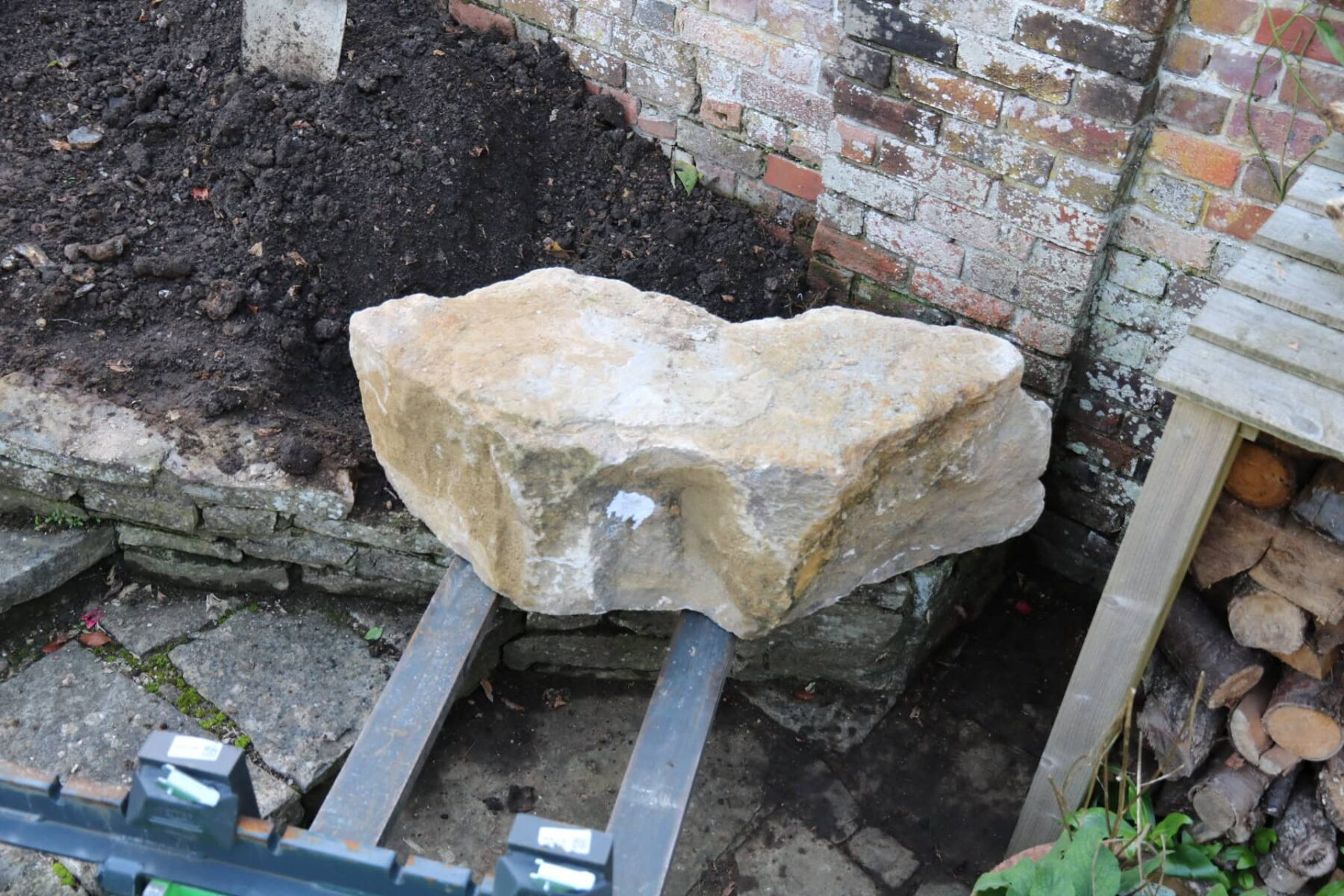 Positioning the first keystone rock
Positioning the first keystone rock
 Arranging the rocks for a natural look
Arranging the rocks for a natural look
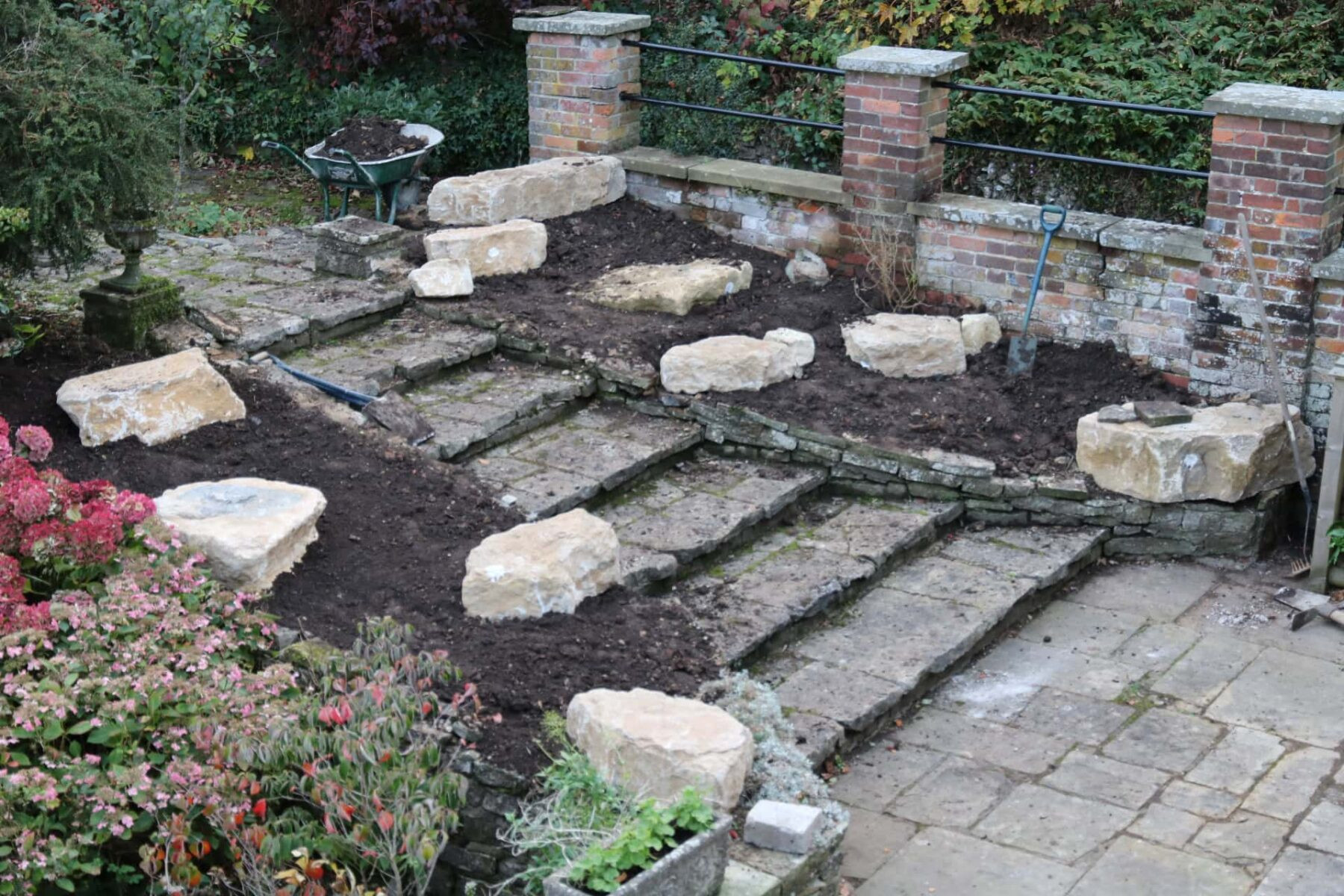 Keystone rock in its final position
Keystone rock in its final position
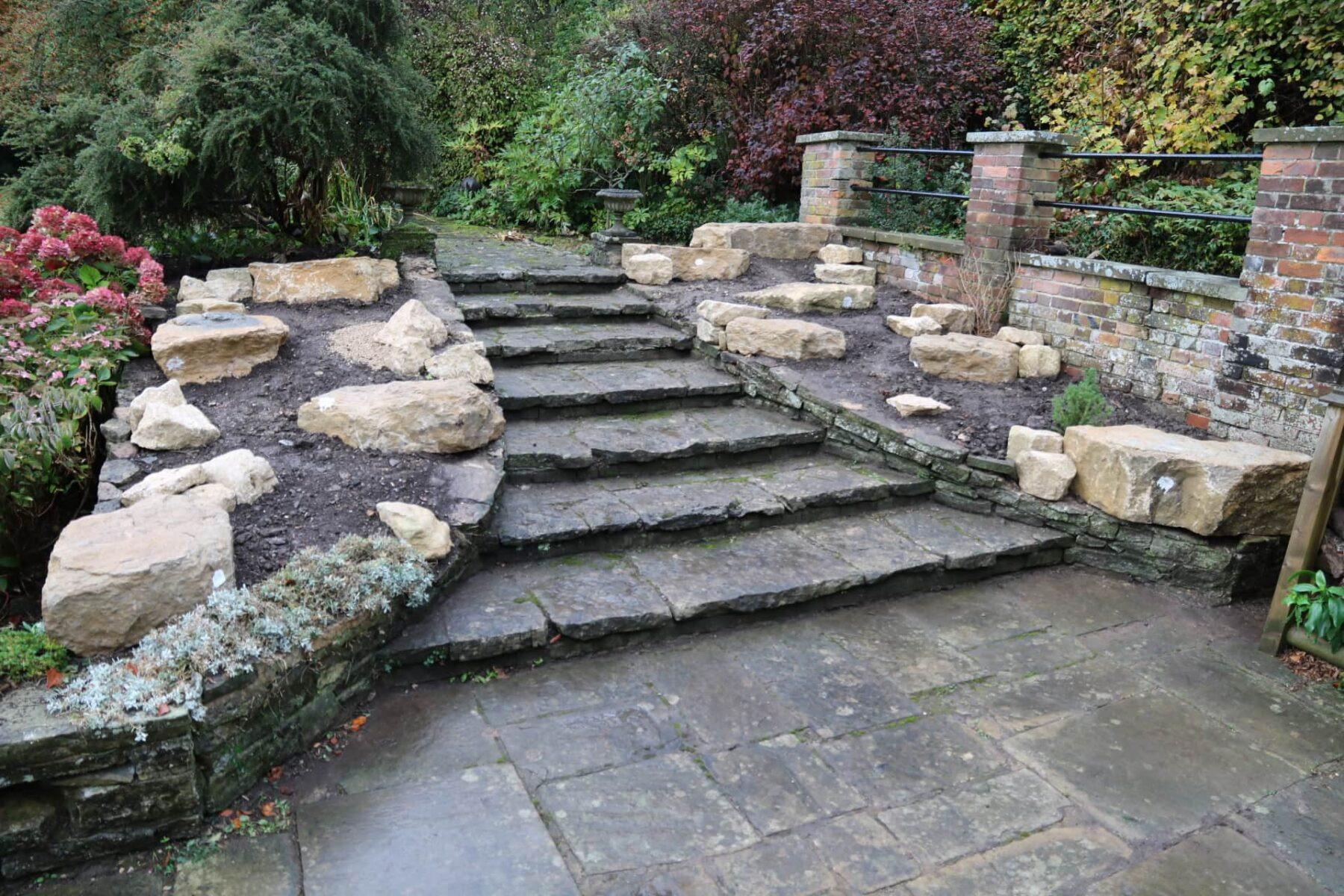 Finished rock garden design with balanced stone placement
Finished rock garden design with balanced stone placement
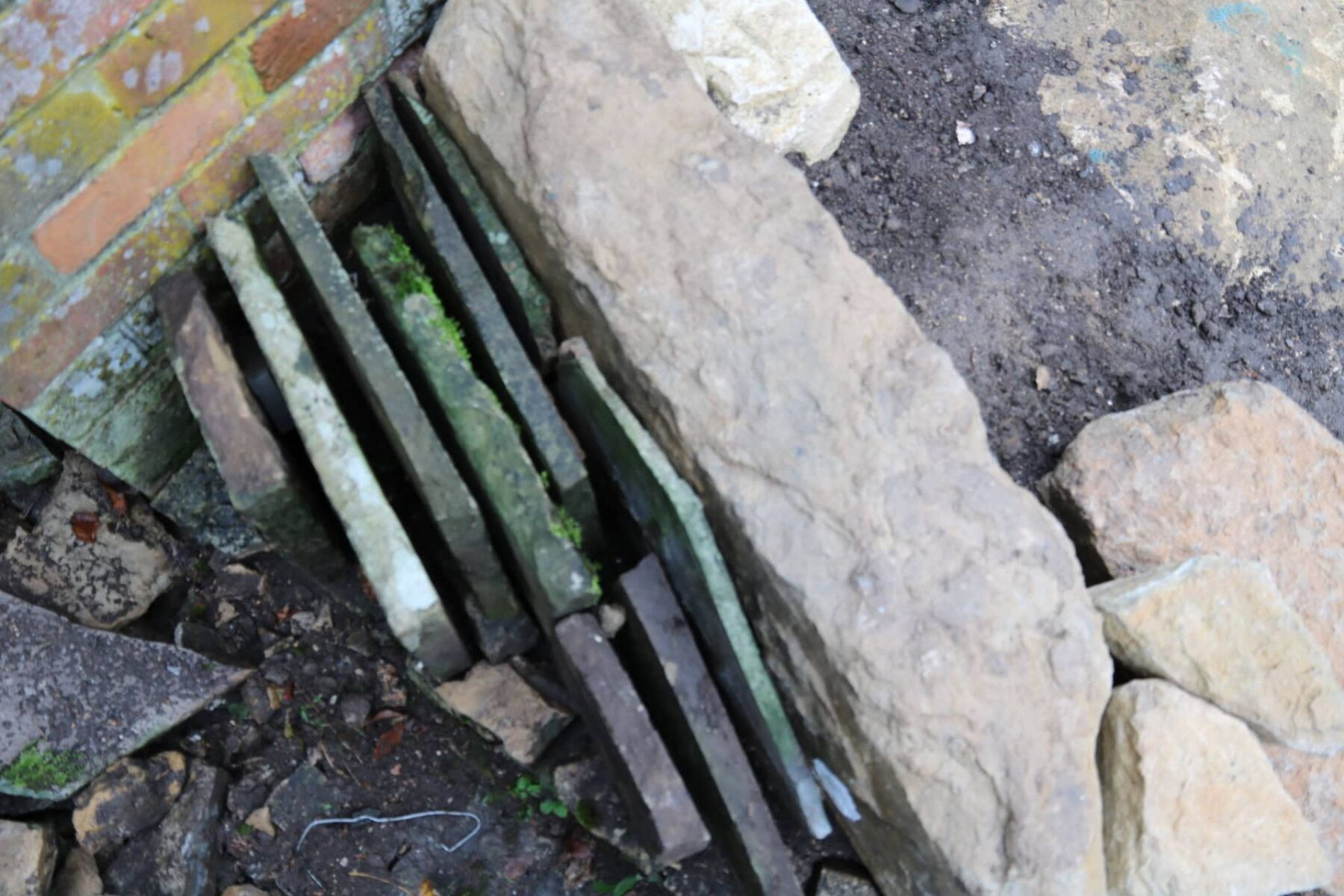 Creating a crevice garden for alpine plants
Creating a crevice garden for alpine plants
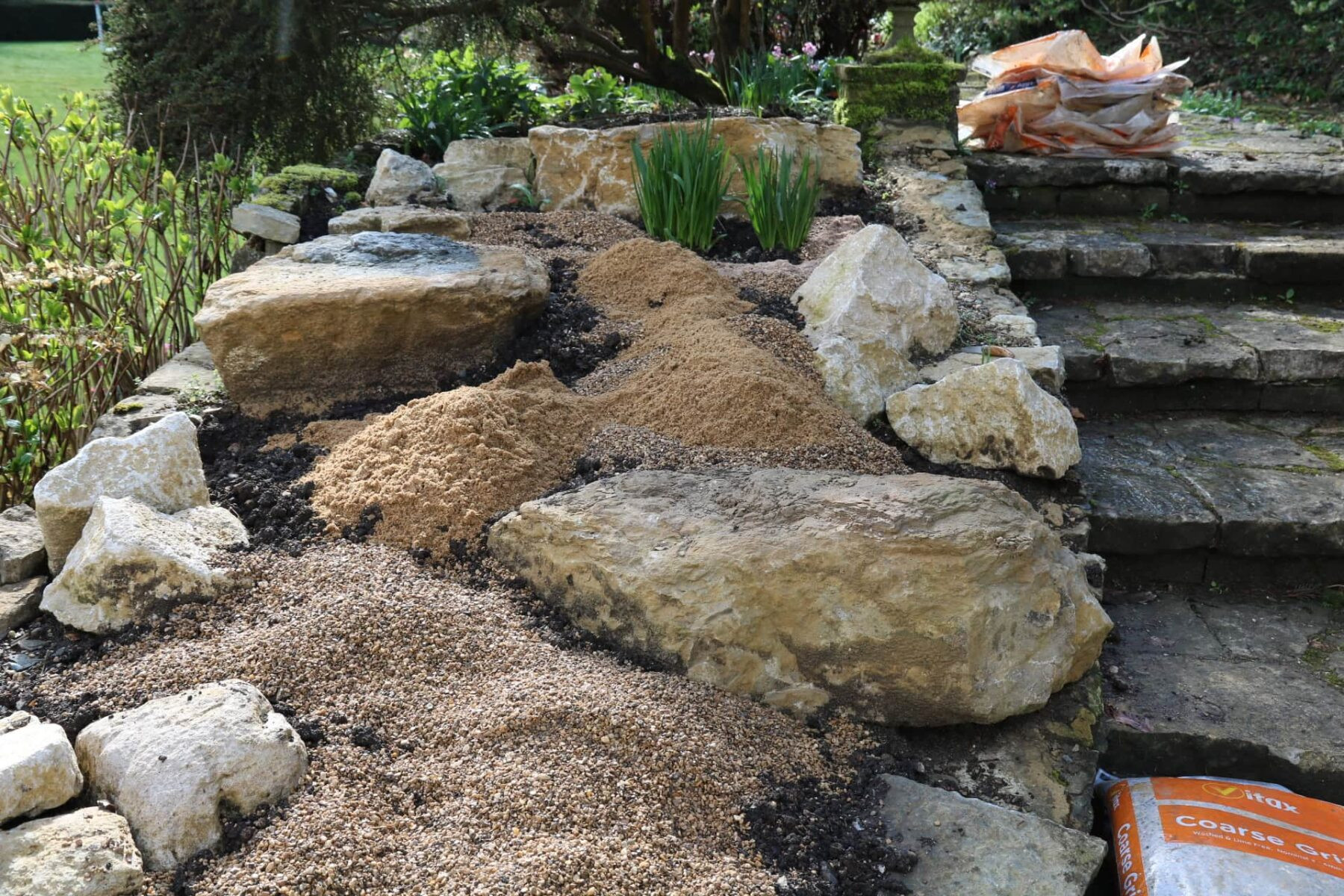 Digging in sand and gravel for soil preparation
Digging in sand and gravel for soil preparation
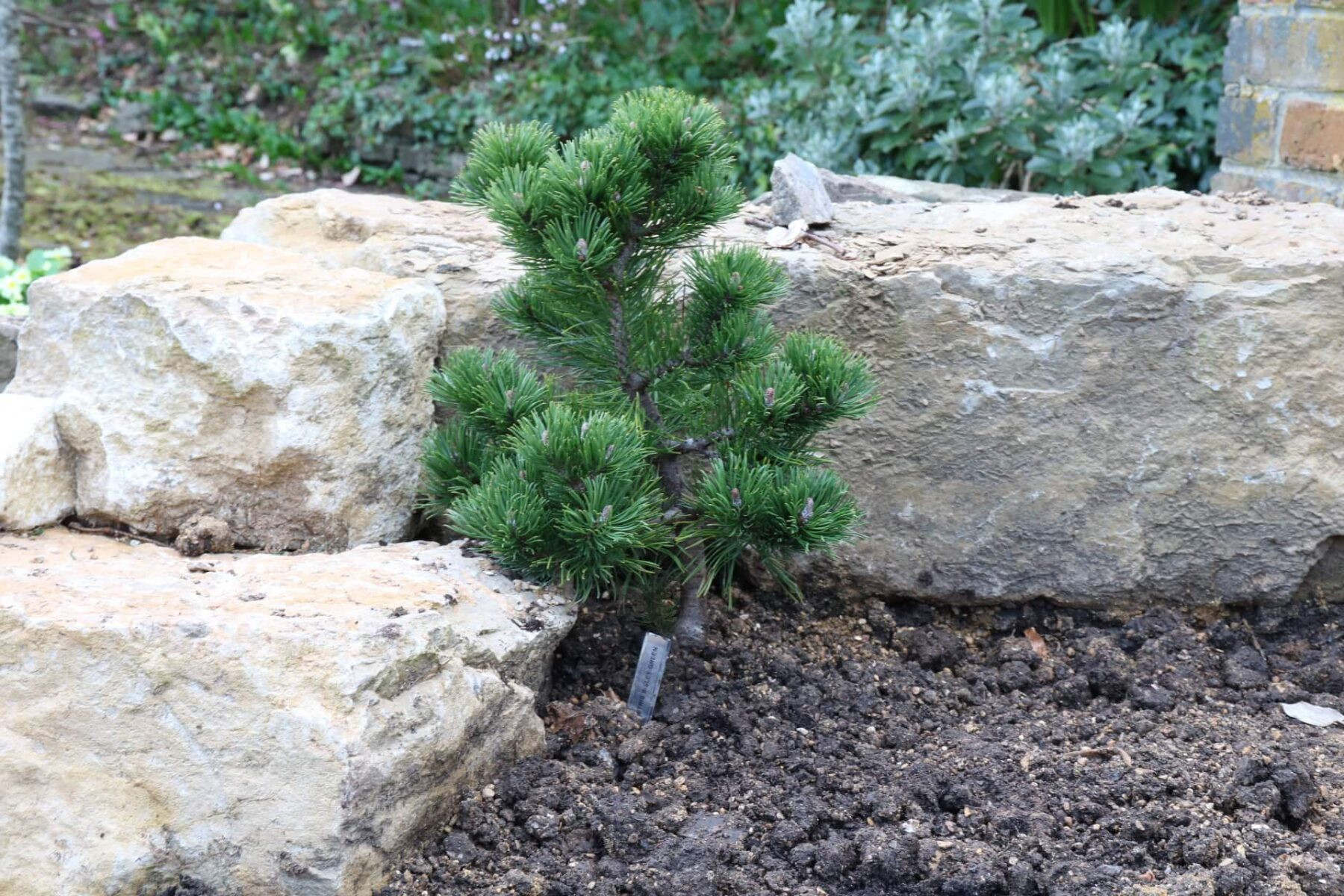 Conifer Plant with natural stone backdrop
Conifer Plant with natural stone backdrop